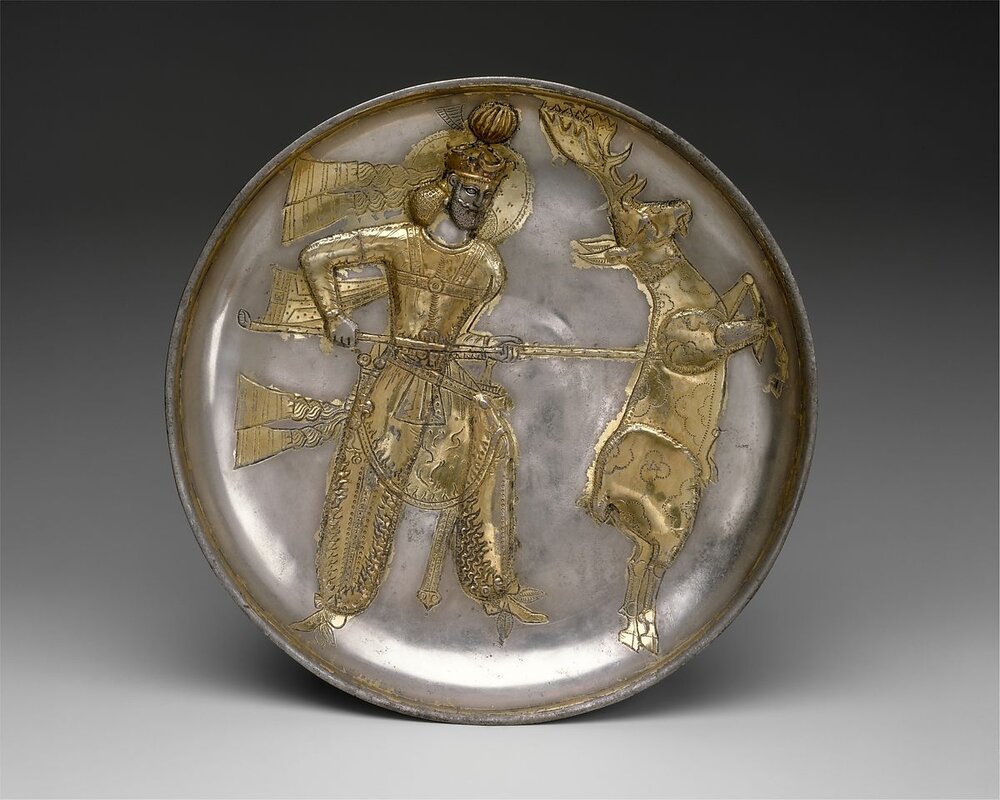Sasanians promoted Persian arts through trade, conquest, and diplomacy: experts

TEHRAN - Under Sassanid rule (224 CE–651) Persian arts and architecture experienced a general renaissance. However, it made its way well beyond the vast borders of the longest-lived Persian dynasty, which at its greatest extent encompassed all of present-day Iran and Iraq and stretched from the eastern Mediterranean (including Anatolia and Egypt) to Pakistan, and from parts of southern Arabia to the Caucasus and Central Asia.
Experts at the Metropolitan Museum of Art of New York City say that the trade, conquest, and diplomacy resulted in the diffusion of Sasanian luxury arts both in East and West during the four centuries of Sasanian rule.
Architecture often took grandiose proportions such as palaces at Ctesiphon, Firuzabad, and Sarvestan that are amongst highlights of the ensemble. Crafts such as metalwork and gem-engraving grew highly sophisticated, yet scholarship was encouraged by the state. In those years, works from both the East and West were translated into Pahlavi, the language of the Sasanians.
Rock-carved sculptures and bas-reliefs on abrupt limestone cliffs are widely deemed as characteristics and striking relics of the Sasanian art, top examples of which can be traced at Bishapur, Naqsh-e Rostam, and Naqsh-e Rajab in southern Iran.
According to the Metropolitan Museum of Art, Sasanian art borrowed from ancient Near Eastern and Greco-Roman traditions to express a new Iranian cultural identity, particularly manifest in prestigious monuments and objects connected to the royal court. Secure dates for many Sasanian buildings and works of art are difficult to determine, in part due to the lack of material from documented archaeological contexts.
“The most renowned Sasanian objects are finely crafted silver vessels produced in large numbers in Iran and Mesopotamia. They were usually hammered into shape and then decorated using a variety of techniques. Typical shapes include high-footed bowls, ewers, vases, and plates. Many feature imagery derived from Greco-Roman iconography whose significance was adapted for the Sasanian repertoire.”
Efforts made by the Sassanids also led to a revival of Iranian nationalism, for example, Zoroastrianism was declared as the state religion.
The dynasty evolved by Ardashir I and was destroyed by the Arabs during a period of 637 to 651. The dynasty was named after Sasan, an ancestor of Ardashir I. Under his leadership who reigned from 224 to 241, the Sasanians overthrew the Parthians and created an empire that was constantly changing in size as it reacted to Rome and Byzantium to the west and to the Kushans and Hephthalites to the east, according to Britannica Encyclopedia.
At the time of Shapur I (reigned 241 CE–272), the empire stretched from Sogdiana and Iberia (Georgia) in the north to the Mazun region of Arabia in the south; in the east, it extended to the Indus River and in the west to the upper Tigris and Euphrates river valleys.
The Sassanid archaeological landscape also represents a highly efficient system of land use and strategic utilization of natural topography in the creation of the earliest cultural centers of the Sassanid civilization.
In 2018, UNESCO added an ensemble of Sasanian historical cities in southern Iran -- titled “Sassanid Archaeological Landscape of Fars Region”-- to its World Heritage list.
The ensemble is comprised of eight archaeological sites situated in three geographical parts of Firuzabad, Bishapur, and Sarvestan. It reflects the optimized utilization of natural topography and bears witness to the influence of Achaemenid and Parthian cultural traditions and of Roman art, which later had a significant impact on the architecture and artistic styles of the Islamic era.
AFM/MG
